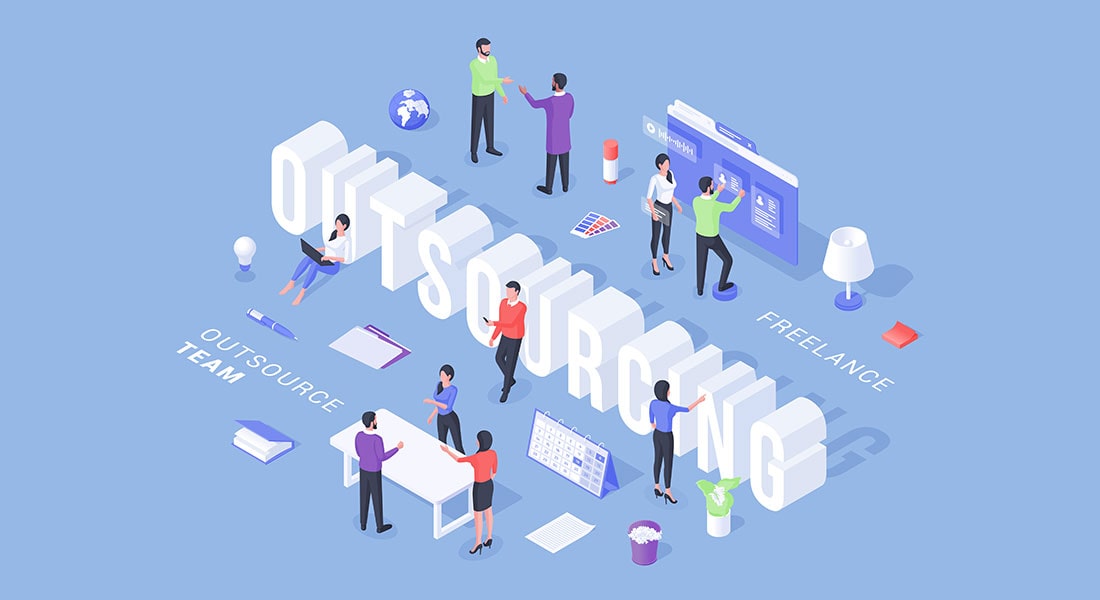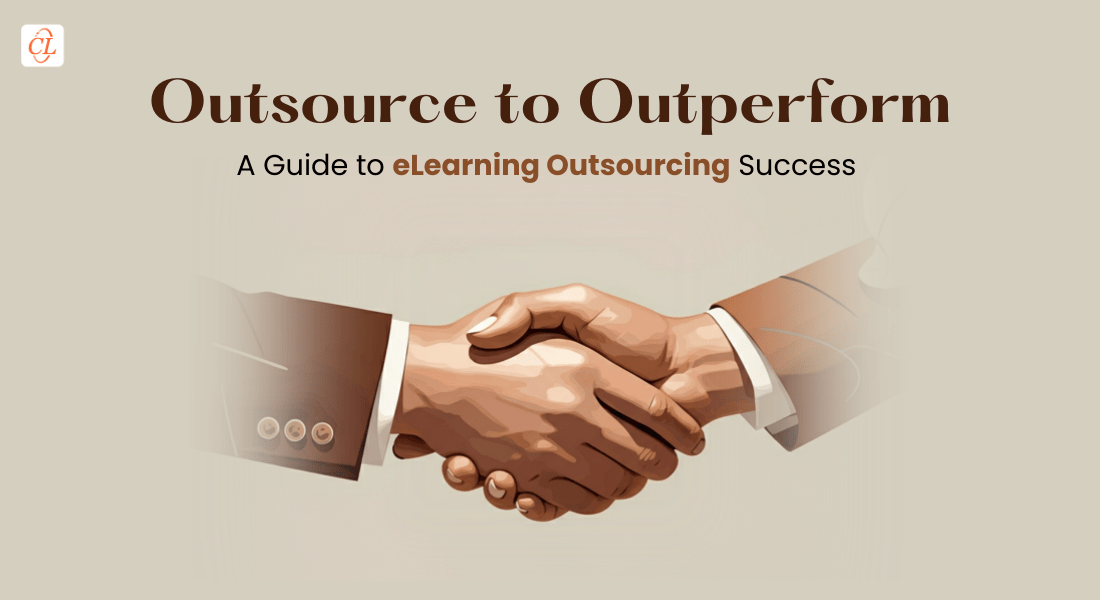Staff Augmentation vs. Outsourcing: Making the Right Choice for Your Business

In the dynamic landscape of modern business, the decision to expand your workforce or extend your capabilities often revolves around the choice between two distinct strategies: staff augmentation and outsourcing. This decision holds significant implications for the growth, efficiency, and competitiveness of your organization. With both avenues offering unique advantages and challenges, it's essential to dissect the core differences and nuances before making a choice. In this blog, we will delve deep into the world of staff augmentation and outsourcing, comparing their merits and drawbacks.
Staff Augmentation Vs Outsourcing! Wondering What’s the Better Choice?
Here are a few aspects covered in this blog -
- Difference between staff augmentation and outsourcing
- Pros and cons of staff augmentation
- Pros and cons of outsourcing
- Factors to consider when making a choice
What is the Difference Between Staff Augmentation and Outsourcing?
Staff Augmentation is a talent acquisition model where a company hires additional personnel for specific projects or tasks. These individuals work alongside the existing team, becoming a temporary part of the organization. Staff augmentation can encompass various roles, from developers and designers to project managers and subject matter experts. This approach provides businesses with the flexibility to expand or downsize their workforce as projects dictate, offering scalability and adaptability.
In contrast, Outsourcing involves contracting external firms or agencies to perform specific tasks or handle entire business processes. These third-party organizations specialize in a particular domain, allowing businesses to access their expertise without building in-house capabilities. Outsourcing can range from IT services and customer support to manufacturing and administrative tasks. It often promises cost savings, increased efficiency, and the ability to focus on core business functions.
Pros and Cons of Staff Augmentation
Advantages of Staff Augmentation
Flexibility in Hiring and Scalability: One of the primary advantages of staff augmentation is its flexibility. You can quickly adjust the size and composition of your team as your project requirements change. This adaptability is invaluable for businesses with fluctuating workloads.
Direct Control Over Augmented Staff: With staff augmentation, you maintain direct control over the augmented employees. They work under your supervision, and you can integrate them seamlessly into your existing workflows. This ensures alignment with your company's culture and values.
Enhanced In-House Knowledge Transfer: By bringing in temporary staff, you can tap into their expertise and industry knowledge. This can lead to the transfer of new skills and insights to your in-house team, enhancing their capabilities in the long run.
→ Download eBook Now: How Staff Augmentation Empowers Training Managers
Disadvantages of Staff Augmentation
Potential Higher Costs: Hiring skilled professionals on a short-term basis can be more expensive per hour or per project compared to full-time employees. The cost-effectiveness of staff augmentation may vary depending on the duration and complexity of your projects.
Limited External Expertise: While augmented staff can bring new ideas and skills, they may lack the diverse experiences that come with external agencies. This limitation can affect your ability to innovate and benefit from broader industry perspectives.
Pros and Cons of Outsourcing
Advantages of Outsourcing
Cost Savings and Efficiency: Outsourcing often provides cost advantages as external service providers can benefit from economies of scale. You can save on labor and infrastructure costs, making it an attractive option for many businesses. Efficiency improvements are also common due to the expertise of specialized service providers.
Access to Specialized Skills: Outsourcing allows you to tap into the specialized skills and knowledge of professional service providers. These experts are dedicated to their fields, ensuring that you receive high-quality work without the need for in-house training and skill development.
Focus on Core Business Functions: By outsourcing non-core functions like IT support or customer service, your organization can concentrate on its core competencies and strategic goals. This can lead to increased competitiveness and innovation.

Disadvantages of Outsourcing
Less Control Over Processes: When you outsource, you relinquish some control over the processes and functions being handled externally. This can be a concern for businesses with strict regulatory requirements or sensitive data.
Communication and Cultural Barriers: Working with international outsourcing partners may lead to communication challenges and cultural differences that can affect project understanding and collaboration. It's essential to establish effective communication channels.
Risk of Data Security and Quality Control Issues: Outsourcing can expose your organization to data security risks, and quality control issues if the service provider doesn't meet your standards. Due diligence in selecting and monitoring outsourcing partners is critical to mitigate these risks.
Factors to Consider When Making a Choice
Choosing between staff augmentation and outsourcing requires a nuanced evaluation of several factors. Here are key considerations that should guide your decision:
Nature of the Project or Tasks: The type of work you need to be done plays a pivotal role. If your project is highly specialized and requires deep expertise, outsourcing to a dedicated service provider might be the better choice. Conversely, for projects that involve close collaboration with your existing team, staff augmentation may be more suitable. Here are a few popular business collaboration platforms to check out.

Budget and Cost Considerations: Your budgetary constraints will significantly influence your decision. Staff augmentation can be more cost-effective for short-term, specific tasks, while outsourcing might provide long-term savings for non-core functions.
In-House Expertise and Control Preferences: Evaluate your current in-house expertise and the extent of control you wish to maintain over the project or task. If you have the necessary expertise and seek full control, staff augmentation may be preferred. However, if you lack in-house capabilities and can relinquish some control, outsourcing might be the answer.
Long-Term vs. Short-Term Needs: Consider the duration of your project or the ongoing nature of the tasks. Staff augmentation is ideal for short-term projects or fluctuating workloads, while outsourcing can provide long-term, consistent support.
Regulatory and Data Security Requirements: If your industry has strict regulatory requirements or if you're handling sensitive data, like your compliance training data, you may need to retain greater control and opt for staff augmentation to maintain data security.
Scalability and Adaptability: If you foresee the need to quickly scale up or downsize your workforce, staff augmentation offers more immediate adaptability. On the other hand, outsourcing contracts may involve longer lead times.
Final Thoughts!
The decision between staff augmentation and outsourcing is a pivotal one that can significantly impact your organization's trajectory. There's no universal right or wrong answer. What's most critical is that you make an informed choice that aligns with your specific goals and circumstances. Remember that flexibility is key. Be ready to adapt and customize your approach as projects and business needs evolve. If you have already decided and your preferred choice turns out to be staff augmentation, here’s an eBook to further help you out.



![Why eLearning for Employee Onboarding? [Infographic]](https://blog.commlabindia.com/hubfs/Imported_Blog_Media/elearning-employee-onboarding-infographic-main.jpg)

